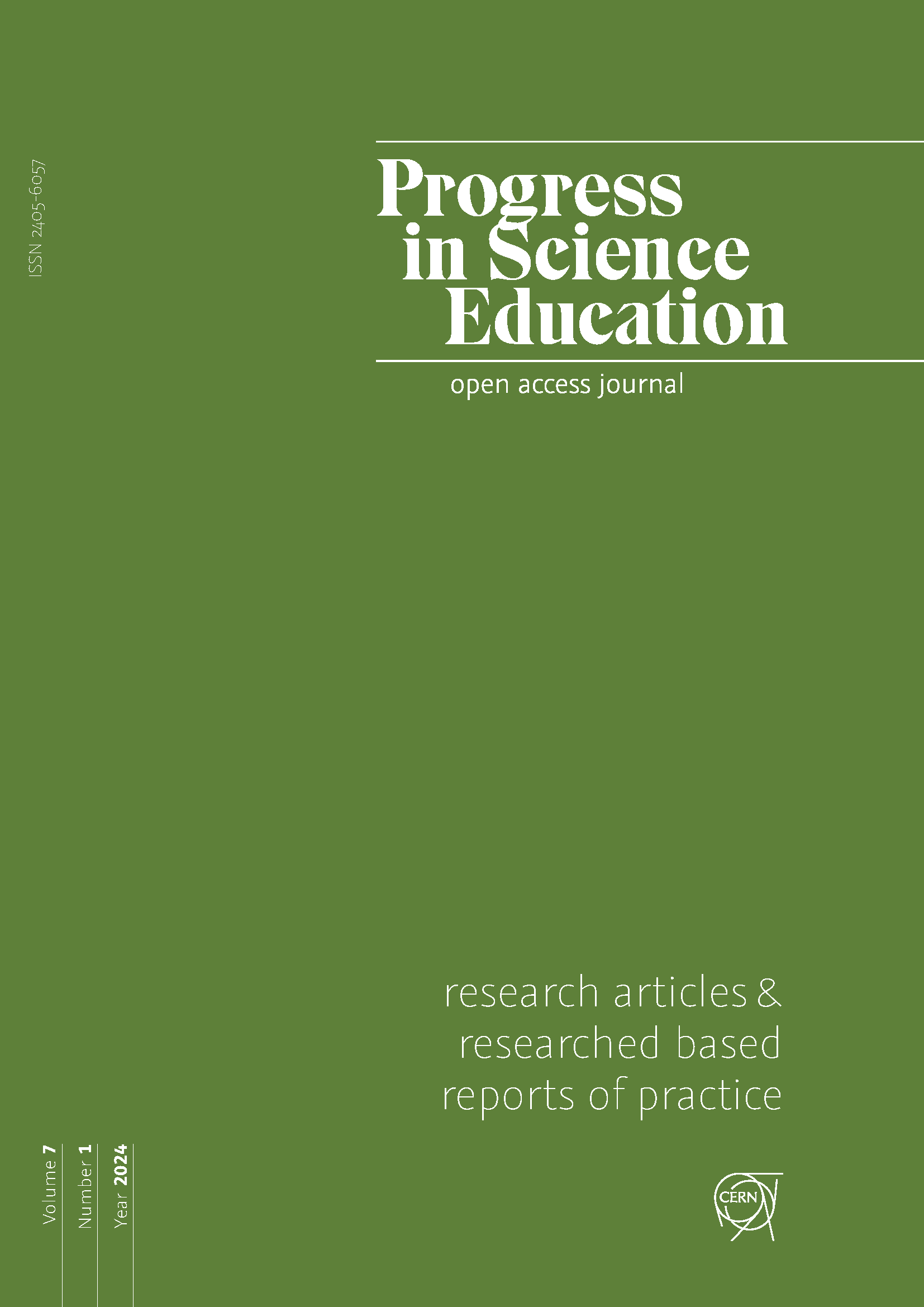Development and evaluation of a GUM-based curriculum on measurement uncertainty for upper secondary
DOI:
https://doi.org/10.25321/prise.2024.1428Abstract
Background: References to the importance of measurement uncertainty (MU) can be found in numerous national curricula. However, the number of materials for the introduction of MU in science teaching and science education research on MU in general, can genuinely be considered limited. The development of a teaching-learning sequence (TLS) for high school students (upper secondary), which is based on standardised ISO methods on how to deal with MU has not been carried out so far. Introducing MU to teachers among development and evaluation of curricula is therefore the current stage of research in this particular area.
Purpose: The present project involved the development and evaluation of a TLS for upper secondary that is based on the Guide to Expression of Uncertainty (GUM) to provide materials that can be directly implemented in the science classroom. A final product that facilitates deeper understanding of MU and its application in a scientific context by learners are the main objectives.
Design/Methods and setting: Using a design-based research approach, the project involved various research and development cycles that consisted of expert interviews, educational reconstruction, probing acceptances in addition to collection and analysis of data gathered in three different Physics classes in Austria (32 learners participated). A variety of different instruments of empirical education research (e.g. analysis of videos, interviews, quantitative data, etc.) has been used in this project.
Results and Conclusion: The central design principle was ‘trustworthiness of experiments and data’ following GUM recommendations of Type-A and Type-B determination. Students first build a measuring instrument by themselves to introduce Type-B uncertainties. Then - using the same instrument for their measurements -they acquire a measurement series for a subsequent introduction of Type-A uncertainties. The TLS provides a complete introduction using ISO standardised methods on how to deal with MU. The evaluation was successful, key concepts were accepted by students and learning objectives were achieved. The concept of ‘trustworthiness’ is currently under further investigation at the University of Vienna during a study that builds on the findings of this projects.
Keywords: Measurement uncertainties, curriculum development, design-based research, GUM, secondary education, Nature of Science
Downloads
Published
Issue
Section
License
Copyright (c) 2024 The Author/s

This work is licensed under a Creative Commons Attribution-NonCommercial-ShareAlike 4.0 International License.
Authors who publish with this journal agree to the following terms:
- Authors retain copyright and grant the journal right of first publication with the work simultaneously licensed under a Creative Commons Attribution License that allows others to share the work with an acknowledgement of the work's authorship and initial publication in this journal. The applicable licence is https://creativecommons.org/licenses/by-nc-sa/4.0/, which means
You are free to:
Share — copy and redistribute the material in any medium or format
Adapt — remix, transform, and build upon the material under the following terms:
Attribution: You must give appropriate credit, provide a link to the license, and indicate if changes were made. You may do so in any reasonable manner, but not in any way that suggests the licensor endorses you or your use.
NonCommercial: You may not use the material for commercial purposes.
ShareAlike: If you remix, transform, or build upon the material, you must distribute your contributions under the same license as the original.
Authors are able to enter into separate, additional contractual arrangements for the non-exclusive distribution of the journal's published version of the work (e.g., post it to an institutional repository or publish it in a book), with an acknowledgement of its initial publication in this journal.
Authors are permitted and encouraged to post their work online (e.g., in institutional repositories or on their website) prior to and during the submission process, as it can lead to productive exchanges, as well as earlier and greater citation of published work (see The Effect of Open Access).

